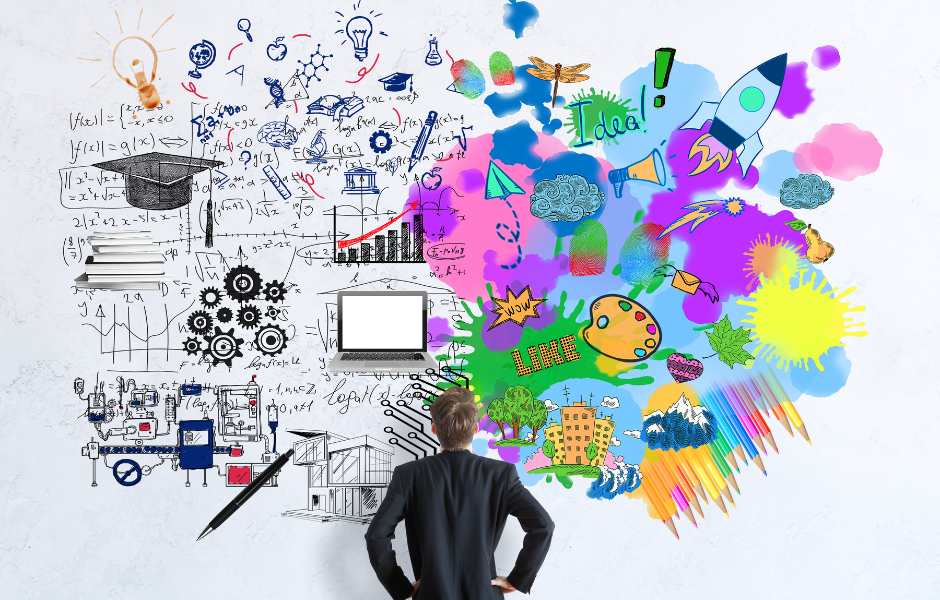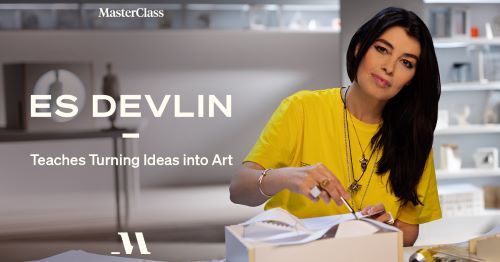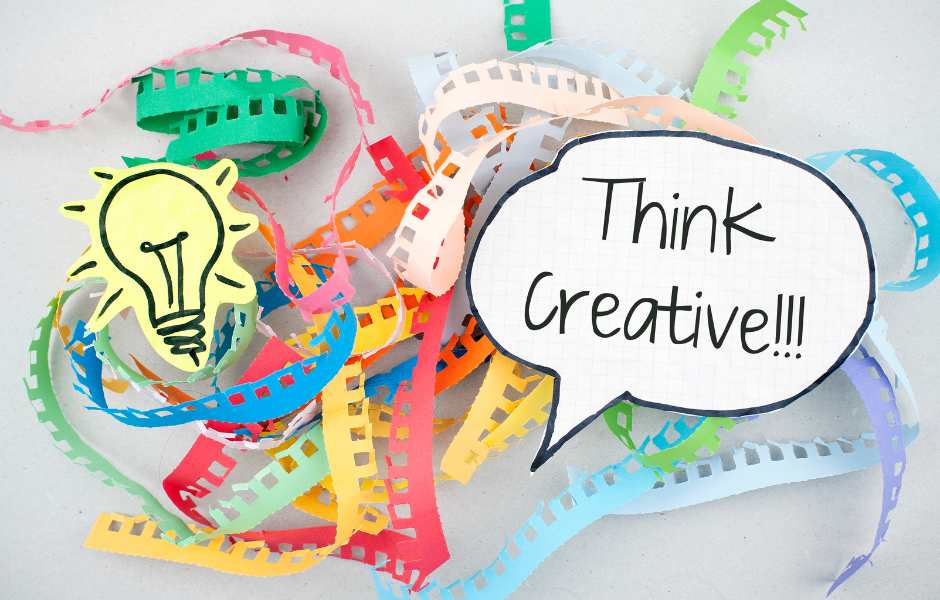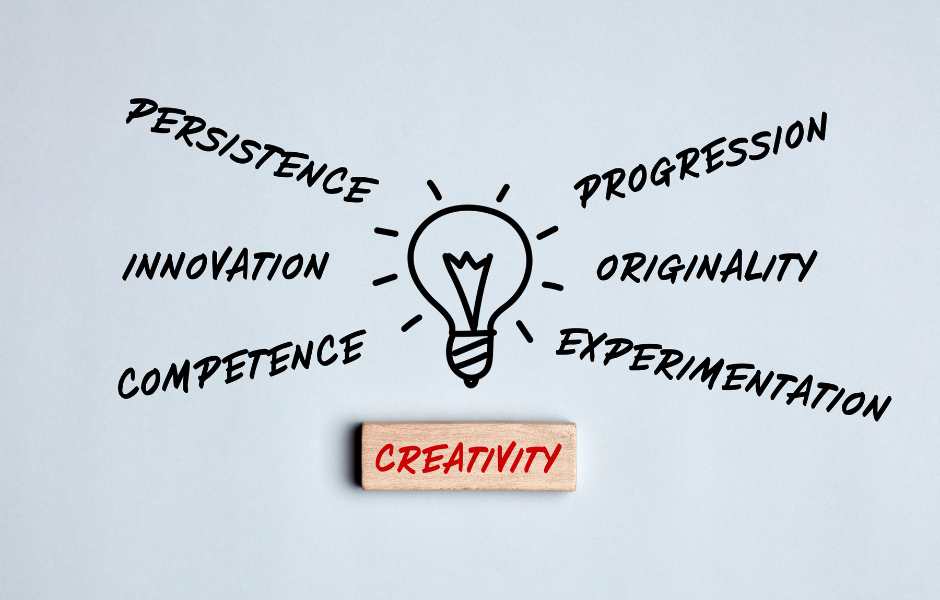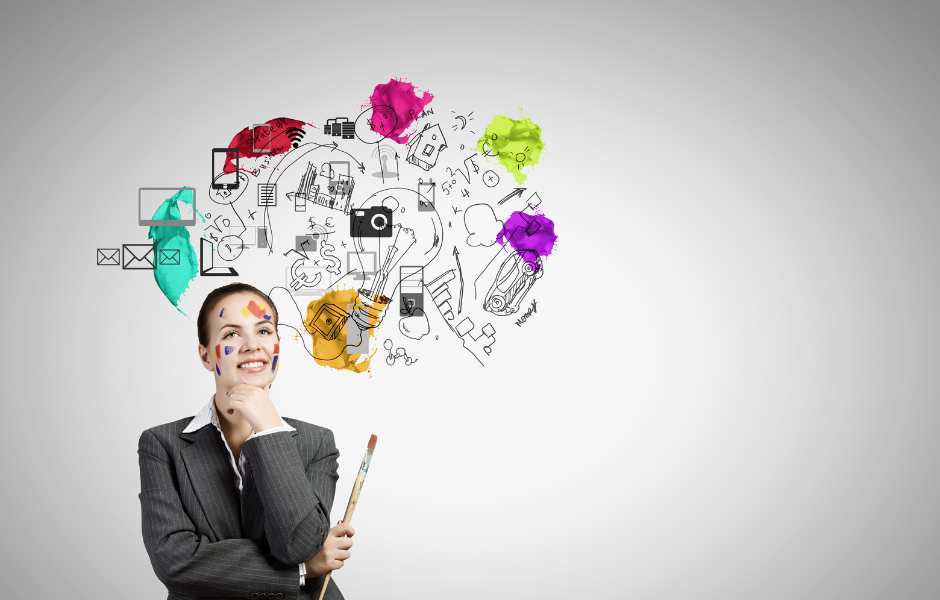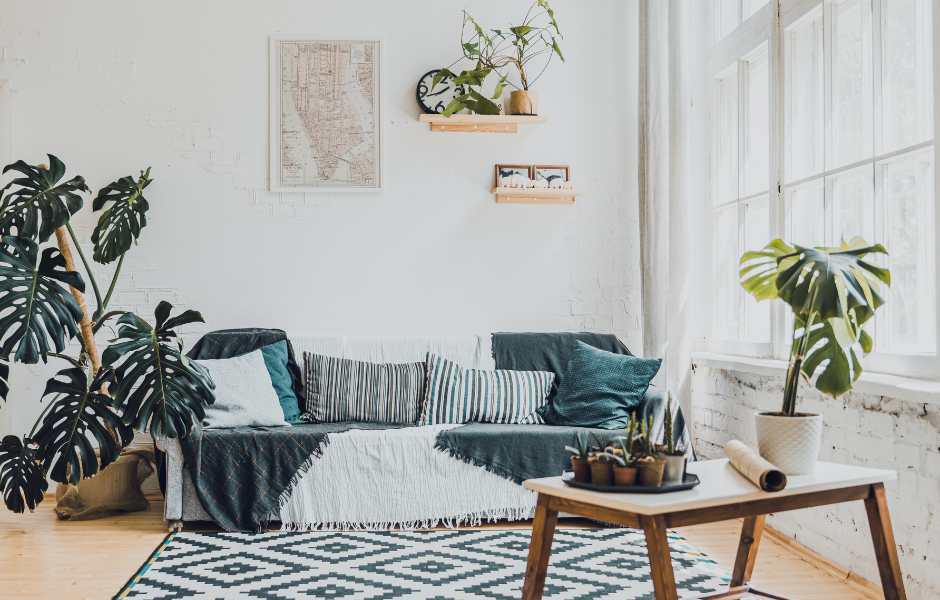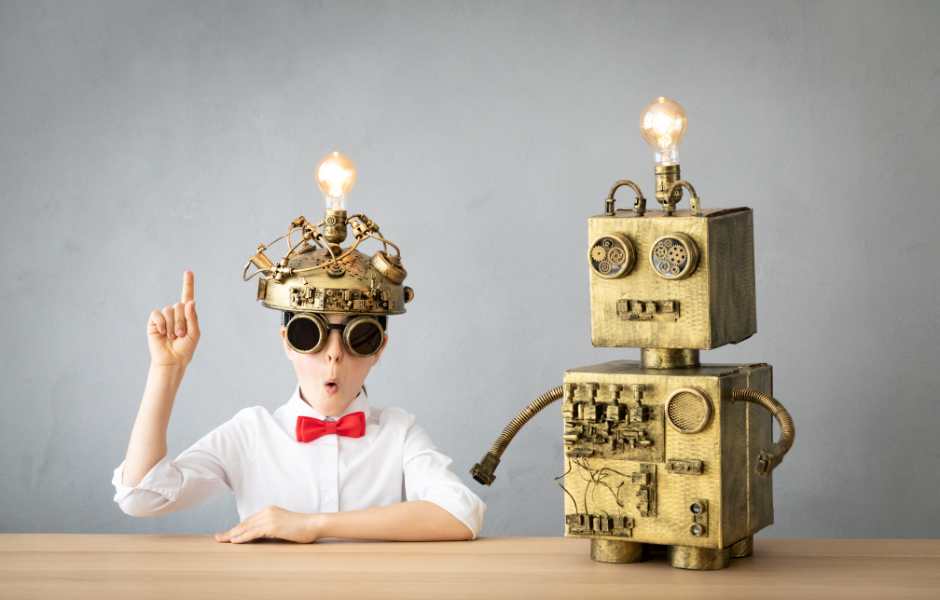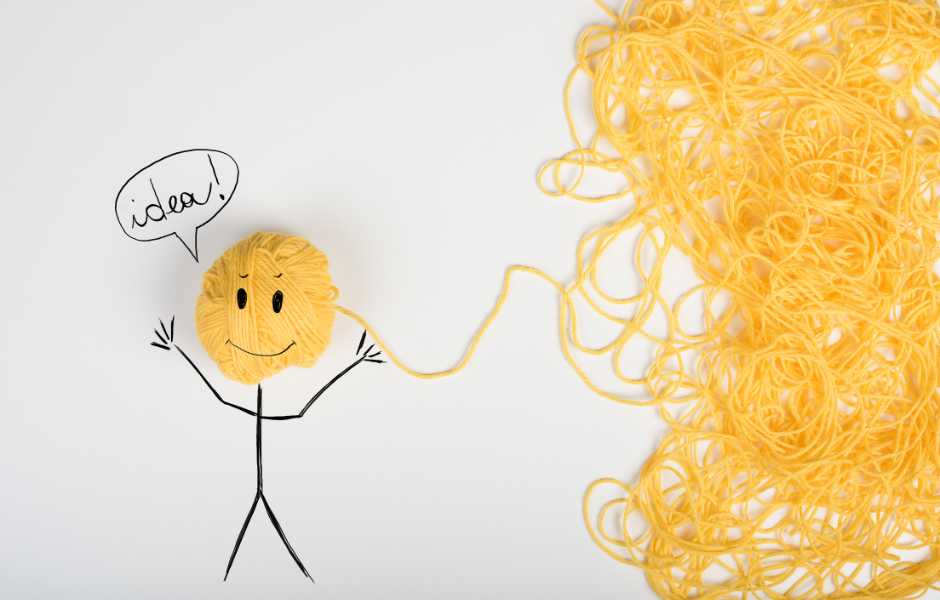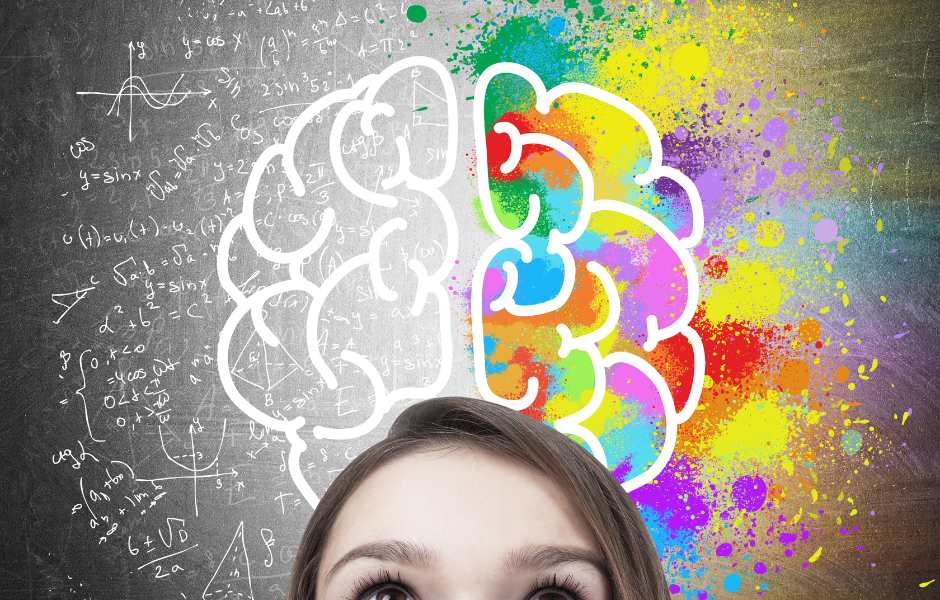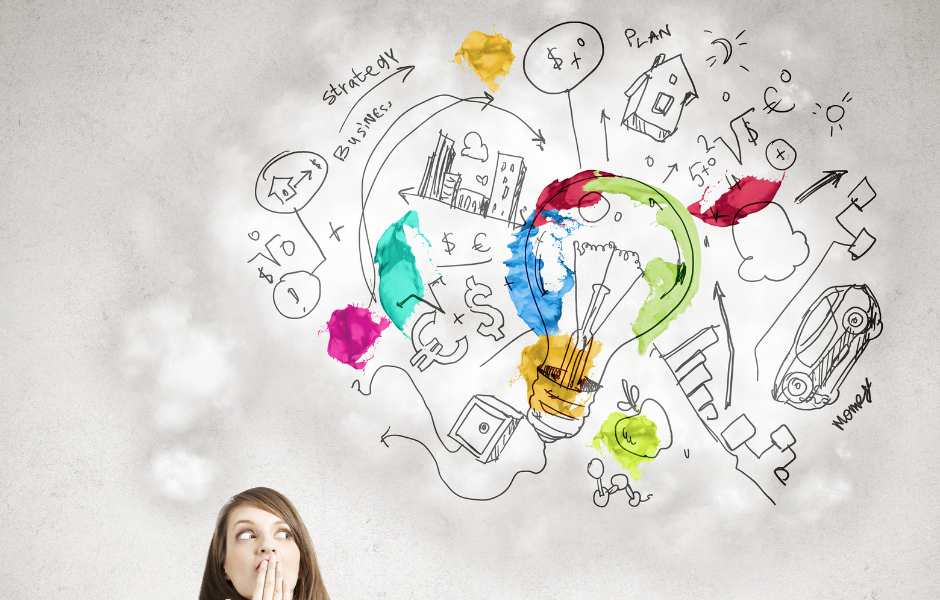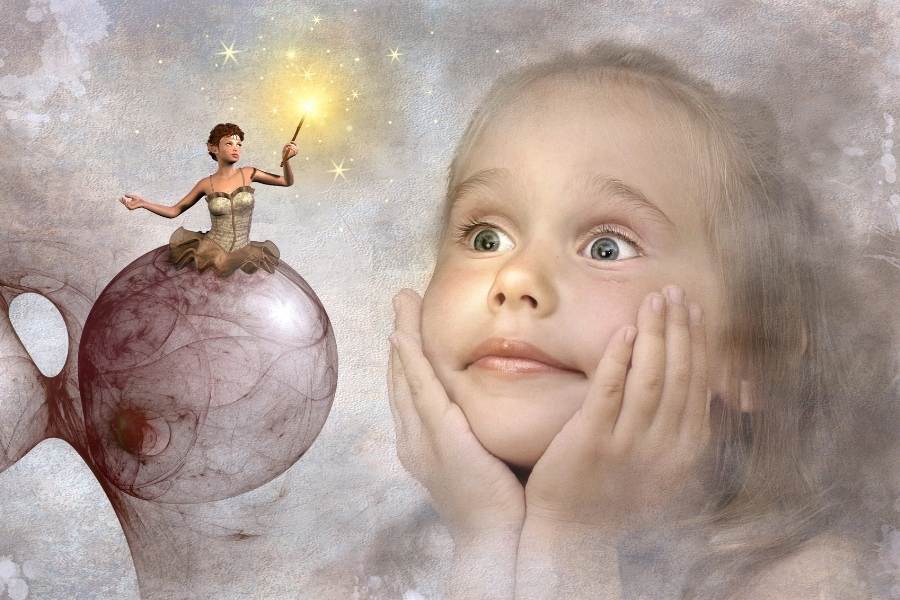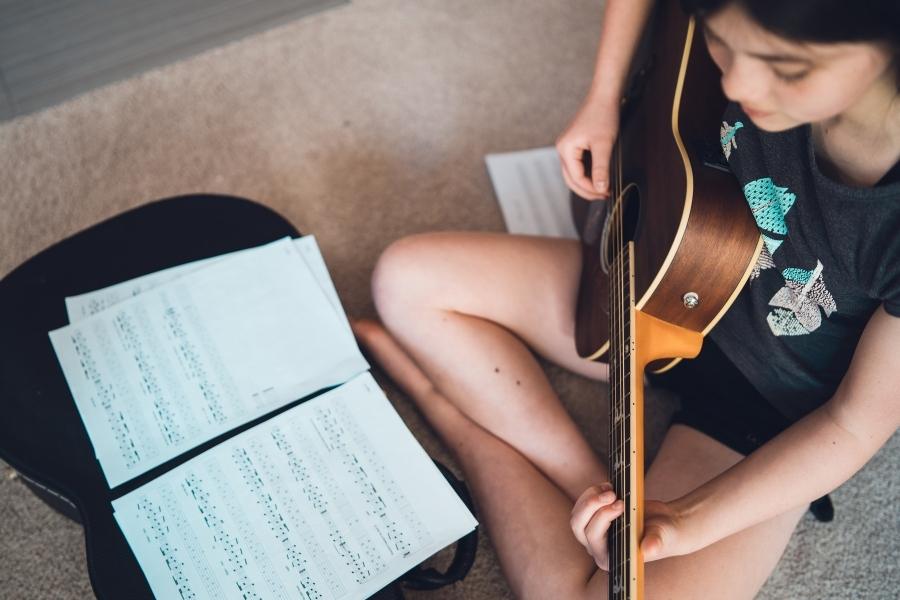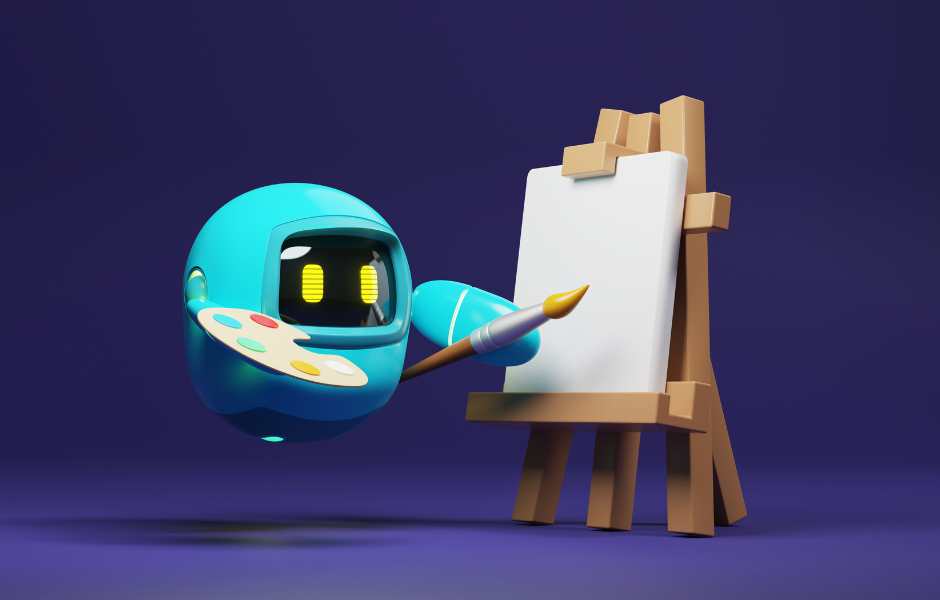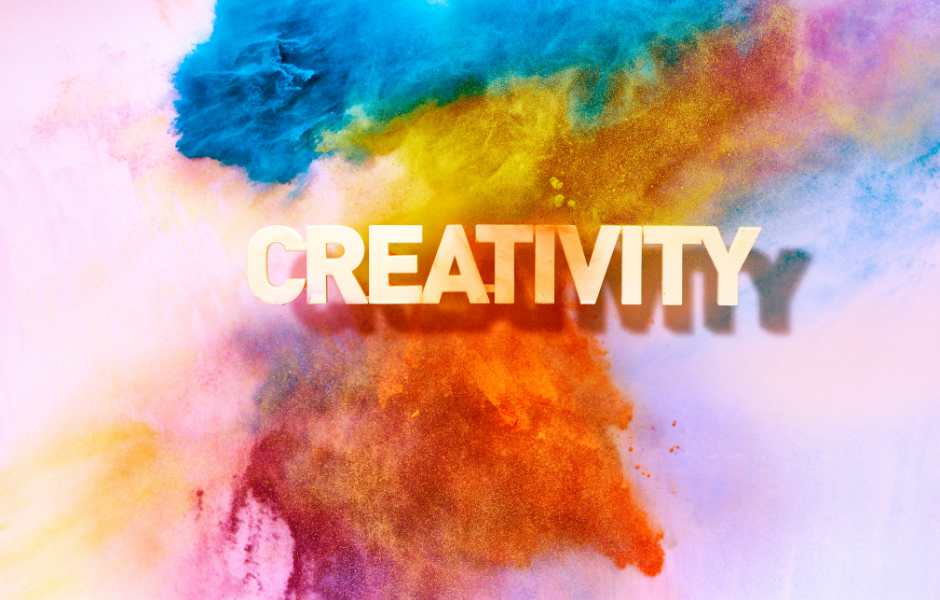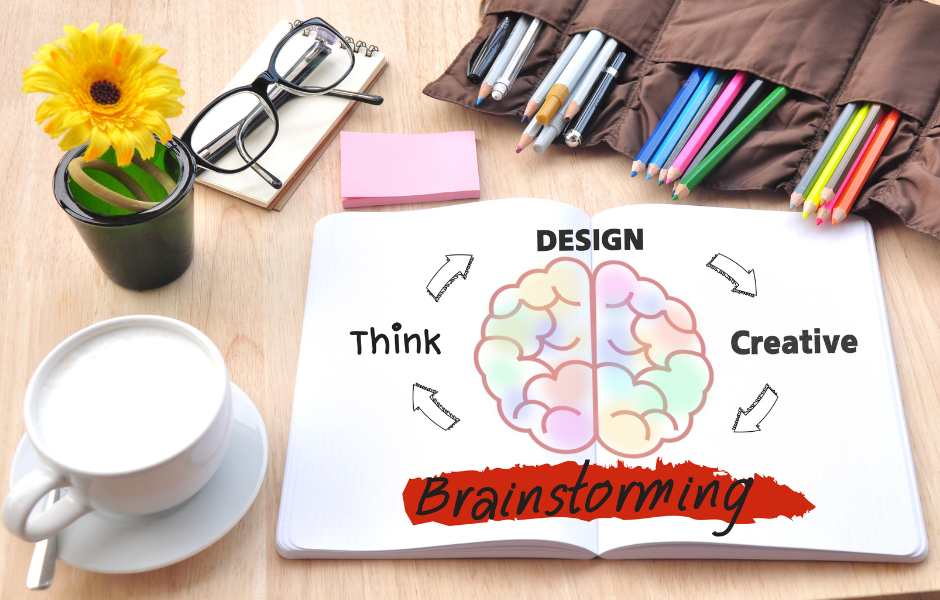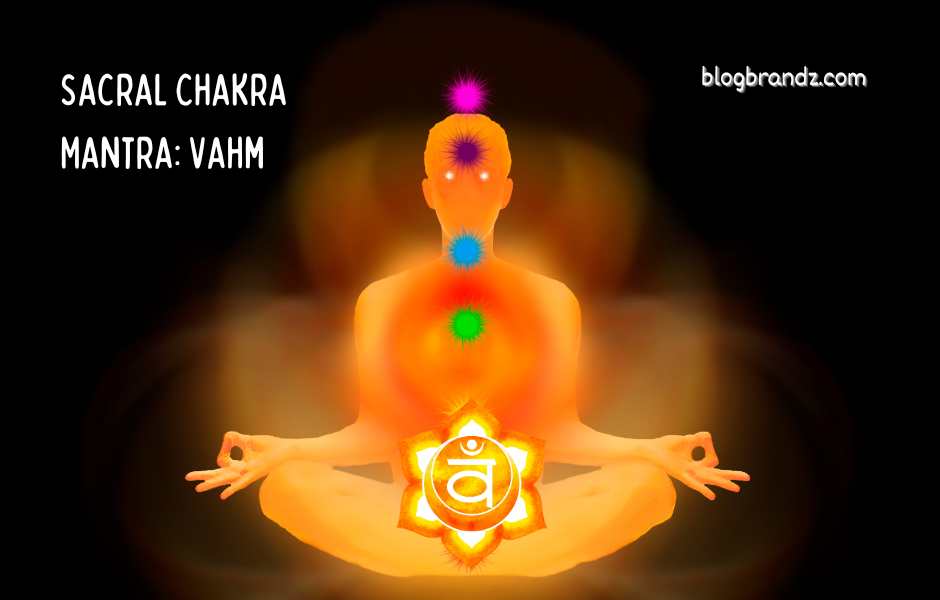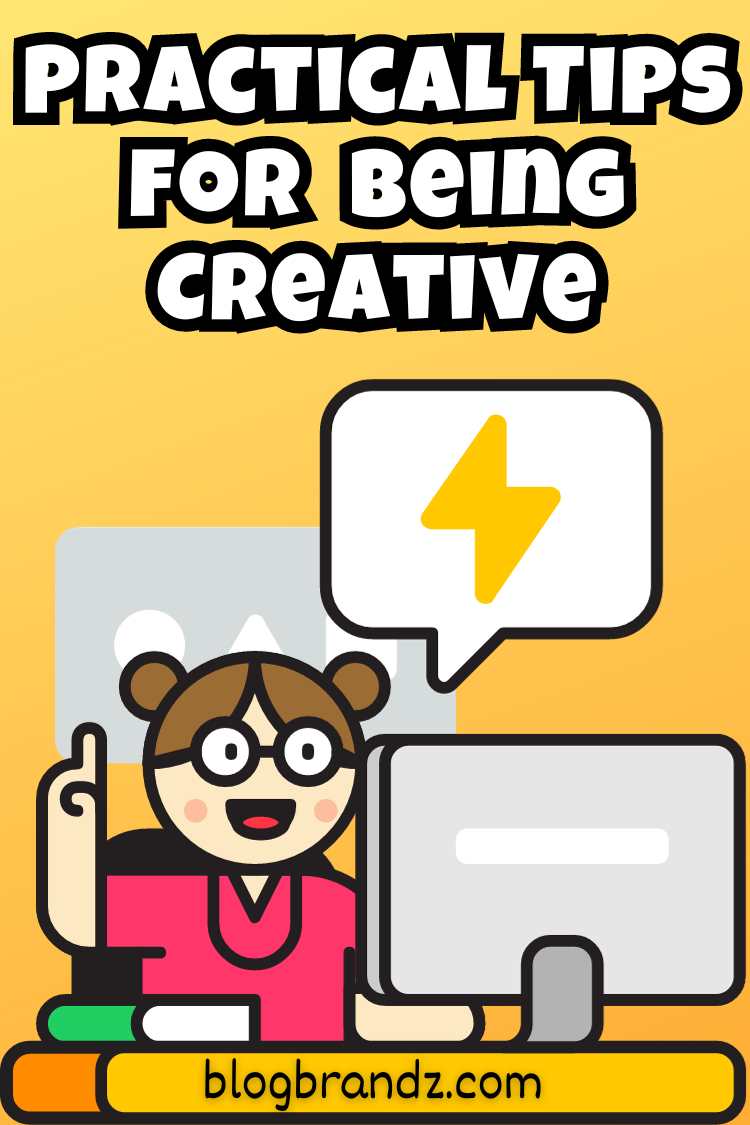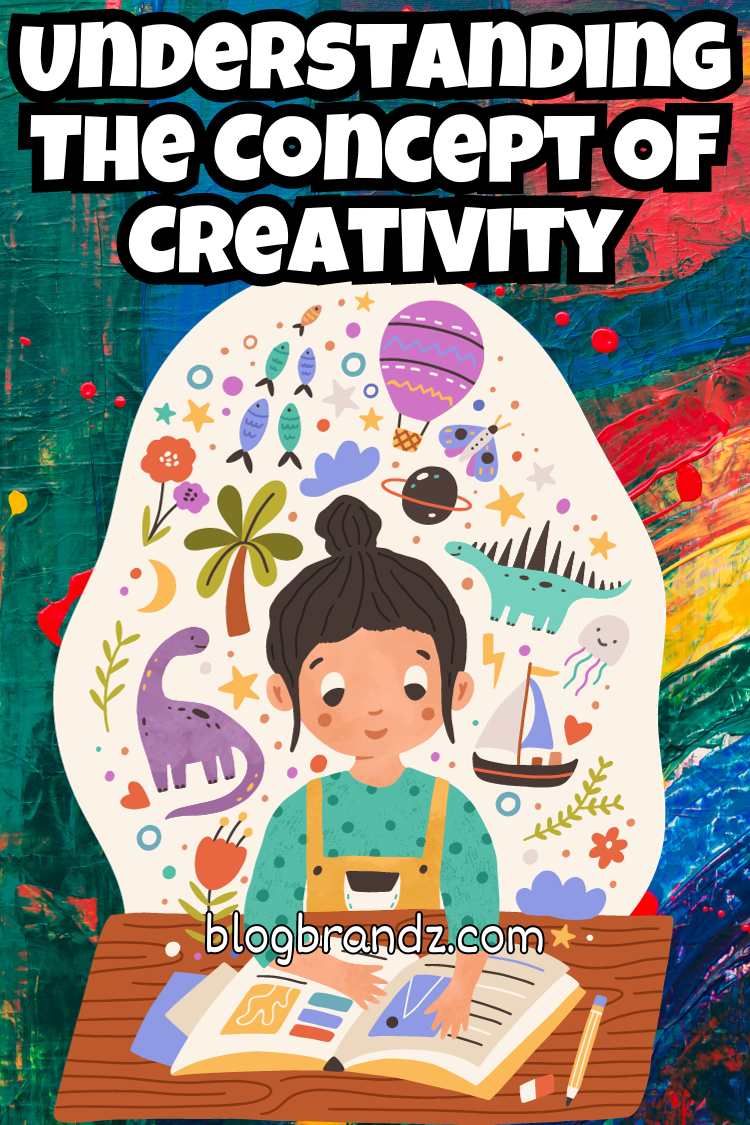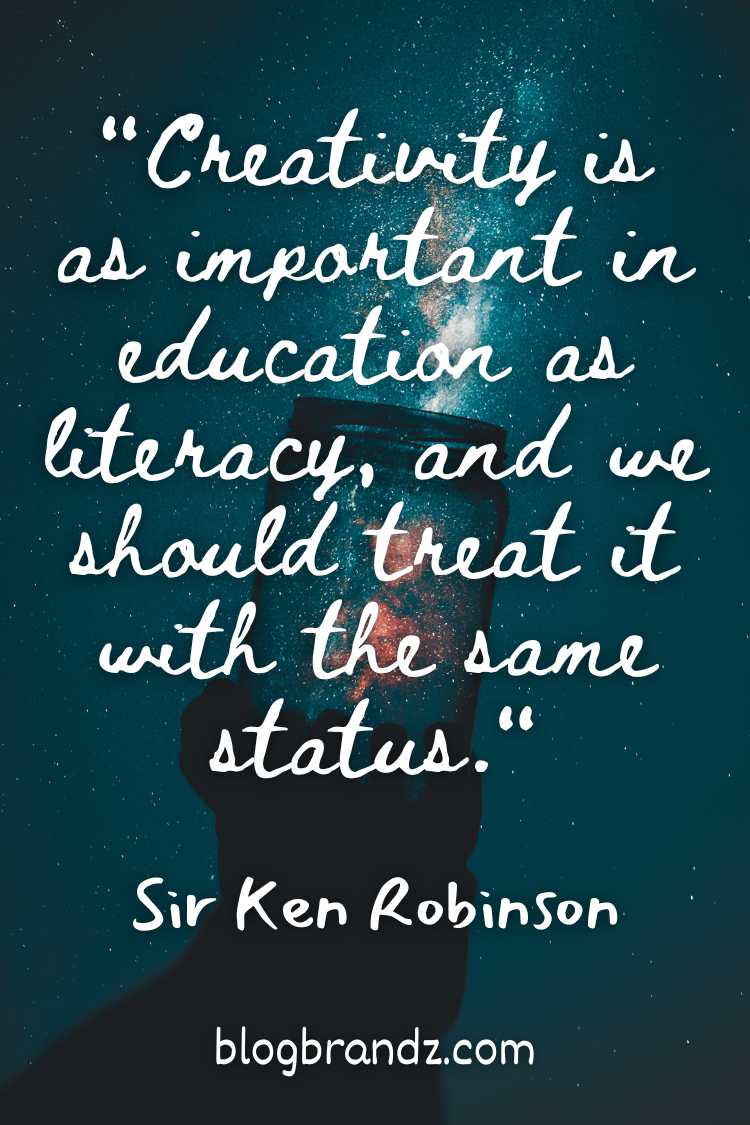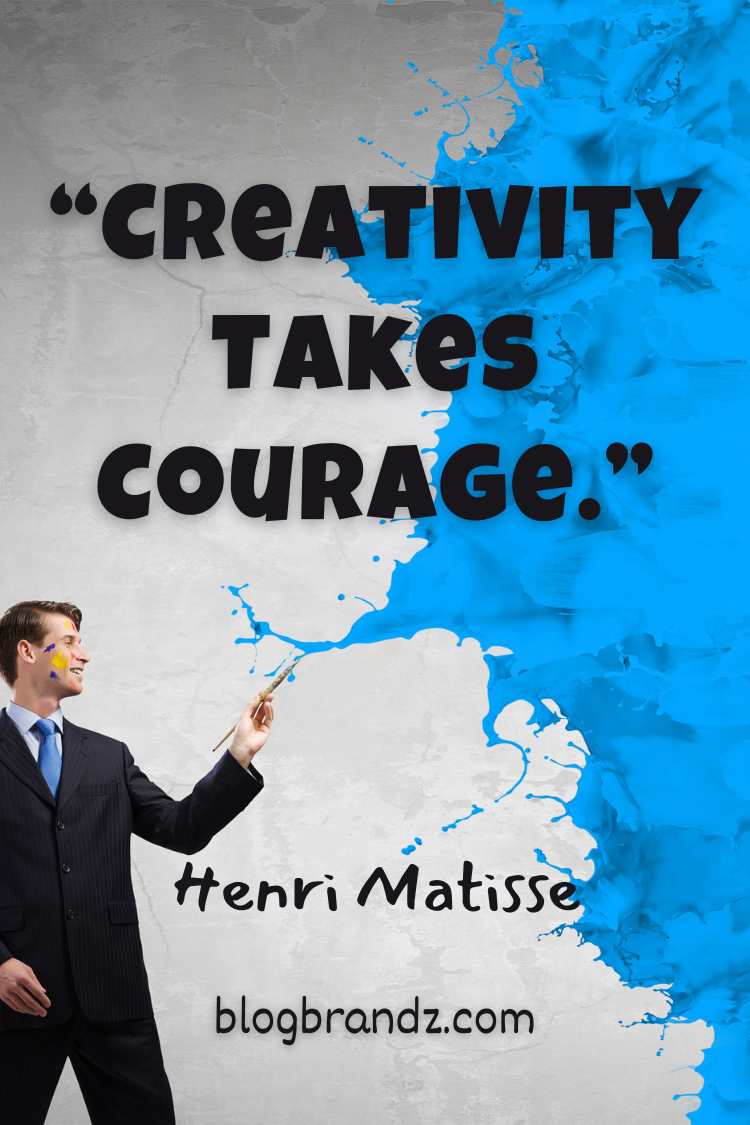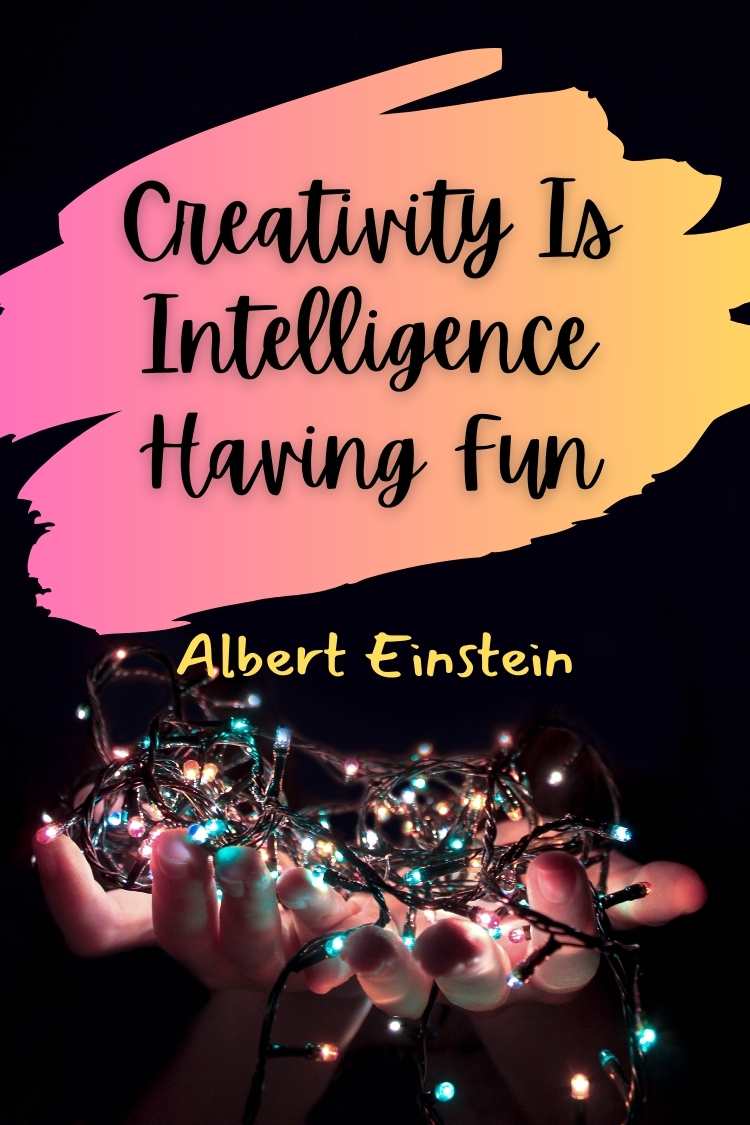Learn the art of creative thinking and tap into your creative genius with these tips to enhance creativity and unleash your imagination.
Enhancing creativity and creative thinking is an essential endeavor and the driving force behind groundbreaking inventions, captivating art, and innovative solutions to complex problems.
In a world that constantly demands innovation and originality, creativity has become an invaluable currency. Balancing critical and creative thinking is the key to making well-informed decisions while fostering innovative solutions that drive progress.
One of the most common misconceptions about the concept of creativity is that it’s a talent reserved for a select few. But creative thoughts aren’t reserved for only those blessed with artistic prowess or ingenious intellect.
Anyone can be creative and cultivate that wellspring within each of us, waiting to be tapped, explored, and nurtured. This article is your guide to harnessing the immense power of creativity.
It will walk you through the labyrinth of creative thinking and explore the creative process, debunking myths and revealing practical secrets to get your creative juices flowing.
Whether you’re an aspiring artist, a problem-solver, a writer, or an entrepreneur who yearns for more creativity in business, you’ll find plenty of things to do to boost creativity in this article.
From understanding the psychology of creativity to creating the ideal environment, from exploring the influence of colors on imagination to artistic pursuits and unconventional methods to crystalize your creative vision, this comprehensive roadmap will help unlock your boundless potential.
Join us in this adventure as we embark on a quest to unleash your creative spirit and discover the limitless boundaries of your imagination. It’s time to transform your everyday existence into a canvas of innovation and your mind into a sanctuary of inventive brilliance.
“Creativity is as important in education as literacy, and we should treat it with the same status.” ~ Sir Ken Robinson
Contents
Exploring The Psychology of Creativity
The creative mind is a wondrous playground where the creative brain orchestrates the symphony of imagination, weaving ideas into innovative masterpieces.
The components of creativity encompass a combination of imagination, expertise, motivation, and a conducive environment, all working in harmony to yield innovative ideas and solutions.
To truly be creative, one must understand the creative process itself. This process involves nurturing the ability to generate innovative and imaginative ideas.
Creative people thrive on unconventional thinking and are adept at transforming unique concepts into tangible works of art or innovative solutions.
To expand your creative vision, it’s crucial to foster a mindset that embraces unorthodox thinking and encourages the exploration of unconventional concepts.
To dive into the fascinating realm of creative psychology, you must understand how the creative brain concocts ideas, and discover the cognitive processes that lead to innovative thinking.
Audiobooks to Boost Creativity
There are numerous audiobooks to enhance creativity and boost creative thinking, such as the noteworthy titles below:
- The Artist’s Way: A Spiritual Path to Higher Creativity: This classic audiobook by Julia Cameron offers a 12-week program to unblock your creativity through creative journaling and other exercises.
- Big Magic: Creative Living Beyond Fear: Elizabeth Gilbert, the author of Eat, Pray, Love shares her insights on creativity, inspiring readers to embrace their creative ideas.
- The Steal Like an Artist Audio Trilogy: Austin Kleon’s audiobook encourages creativity by emphasizing the importance of influence and inspiration in the creative process.
- Creativity, Inc. (The Expanded Edition): Co-founder of Pixar, Ed Catmull explores the creative culture at Pixar and shares insights into fostering creativity within an organization.
- The War of Art: Steven Pressfield’s audiobook dives into the concept of resistance and how to overcome it to unlock your creative potential.
- Flow: Living at the Peak of Your Abilities: Mihaly Csikszentmihalyi explores the state of “flow” and how it leads to heightened creativity and fulfillment.
- Bird by Bird: Some Instructions on Writing and Life: A classic for writers, Anne Lamott’s audiobook offers practical advice and encouragement for those pursuing a writing career.
- The Creative’s Guide to Starting a Business: How to Turn Your Talent into a Career: Ideal for creative entrepreneurs, Harriet Kelsall’s audiobook offers guidance on turning creative ideas into a successful business.
- Lateral Thinking: Creativity Step by Step: Edward de Bono’s lateral thinking is a structured approach to problem-solving and creative thinking that encourages the exploration of unconventional solutions by deliberately departing from traditional thought patterns.
- A Whack on the Side of the Head: How You Can Be More Creative: Roger von Oech’s book is packed with exercises and strategies to stimulate creative thinking.
- The Creative Curve: Allen Gannett explores the science behind creativity and how you can enhance your creative abilities.
Boosting creativity with these audiobooks is like opening a treasure chest of ideas, where each page is a key to unlocking your imagination and innovation. It can help you unravel the secrets of what makes some people more creative than others.
Reading or listening to books fuels imagination and innovation. Literary journeys can ignite your imagination, leading to innovative ideas and the development of your creative identity.
Developing a reading habit for creative inspiration complements your creative journey, making literature a source of ongoing inspiration and fuel for your creative endeavors.
Remember that while these audiobooks can provide valuable insights and inspiration, creativity also thrives through practice, experimentation, and an open mind.
Each audiobook may resonate differently with individuals, so don’t hesitate to explore and find the ones that most ignite your imagination.
Creative Thinking Courses to Learn the Creative Process
Enroll in these creative thinking courses to explore and master the intricacies of the creative process so you can express your creativity at work.
Disciplined Dreaming: Lead Breakthrough Creativity at Work
Employ Josh Linkner’s Disciplined Dreaming system to harness the power of creativity and innovation for tangible results.
Craft a structured framework for expanding your creative potential, fostering a competitive edge, and nurturing personal and professional advancement.
Elevate your leadership by embracing a forward-thinking, entrepreneurial, and creative mindset. Recognize how creativity fuels engagement, empowers individuals, and enhances employee retention.
Participate in the Disciplined Dreaming process and apply it to address a present challenge, cultivating innovative solutions and driving meaningful change.
Click here to learn how to be creative at work
Creativity, Design Thinking, and Innovation for Business
Foster a culture of creativity and innovation within the corporate environment. Cultivate an atmosphere that encourages the generation of novel ideas and solutions.
Establish an open platform for idea-sharing among employees and managers, promoting collaboration and creativity. Attract and retain innovative talent to drive organizational growth.
Challenge conventional thinking by embracing “out-of-the-box” ideas. Hone creative thinking skills and impart them to your team, nurturing a culture of innovation.
Implement Design Thinking, a potent innovation methodology, to solve complex problems effectively. Overcome common barriers that hinder organizational progress.
Leverage proven processes to generate ideas and facilitate brainstorming sessions. Gain a deeper understanding of user needs and preferences. Develop and test prototypes to swiftly validate concepts and accelerate idea development. Embrace disruptive innovation as you prepare for the future of your organization.
Click here to learn creativity and design thinking
Issa Rae MasterClass on Creating Outside the Lines
In her MasterClass, Issa Rae, the Emmy-nominated writer, actor, and producer of the award-winning HBO series Insecure, teaches you how to bring your creative vision to life. With her signature do-it-yourself ethos, she brings her unique blend of humor and a distinctive voice to the forefront.
Issa Rae’s MasterClass on Creating Outside the Lines is a remarkable opportunity for aspiring writers and creators, and a source of motivation and empowerment, reflecting her own journey as a Black creative navigating the challenging landscape of Hollywood.
Click here to preview Issa Rae’s MasterClass
Understand The Creative Process and Its Stages
Creative intelligence combines knowledge and innovation to solve complex problems and devise novel solutions that push the boundaries of conventional thinking.
Creative thinking skills are invaluable for problem-solving and innovation, allowing us to approach challenges with fresh, imaginative perspectives.
Creativity is often misunderstood as a spontaneous, unpredictable burst of brilliance, like a random lightning bolt in the sky. However, it is far from arbitrary; the creative process is structured and systematic and can be cultivated and refined.
It consists of distinct stages: ideation, incubation, and illumination. Each phase is significant, and persevering through them, even when it seems frustrating, is essential to unlock the full potential of your creative thinking.
#1. Ideation
This is the first stage of the creative process, where ideas are generated. It involves brainstorming, mind mapping, and exploring various concepts.
During ideation, the goal is to produce as many ideas as possible, without judgment or critique. It’s about opening your mind to new possibilities, no matter how unconventional they may seem.
Significance: Ideation is crucial because it sets the stage for creativity. It’s where you lay the groundwork for your creative project and begin to consider different angles and perspectives.
#2. Incubation
After the ideation phase, you move into the incubation stage. This is a less active phase where you allow your ideas to sit and percolate in your subconscious mind.
It’s a period of mental relaxation and detachment from the problem or project at hand. During this phase, your brain continues to work on the ideas in the background, even when you’re not consciously focused on them.
Significance: Incubation is vital as it allows your mind to process and refine the ideas generated in the ideation phase. It’s during this stage that connections and insights may emerge, often when you least expect them.
#3. Illumination
The illumination stage is when the “aha!” moment occurs. It’s that sudden insight or breakthrough where the solution or creative concept becomes clear. This phase is characterized by a rush of creativity and excitement as the idea takes shape.
Significance: Illumination is the culmination of the creative process, and it is what people often associate with the lightning bolt of creativity. It’s the reward for your perseverance through ideation and incubation.
Perseverance is essential because creativity is not always a linear process. There will be moments of frustration, self-doubt, and even creative blocks.
However, by pushing through these challenges and continuing to engage in the structured process of ideation, incubation, and illumination, you allow your mind the opportunity to work through obstacles and uncover unique solutions.
Furthermore, the act of persevering can also lead to a deeper understanding of your creative process, which is invaluable for future endeavors.
By recognizing that creativity is a methodical journey rather than a random event, you can approach your creative projects with intention, patience, and a willingness to persist through the ups and downs, ultimately leading to more consistent and successful creative outcomes.
“Creativity is intelligence having fun.” ~ Albert Einstein
Practical Tips to Spark Your Creative Genius
Being creative is not just about generating novel ideas but also about connecting seemingly unrelated concepts to form new and groundbreaking solutions.
To stimulate creative thinking, you should actively engage in activities that inspire and challenge the mind, while also remaining open to new perspectives and being receptive to unexpected sources of inspiration that can spark innovative ideas.
#1. Craft your creative corner
Your surroundings play a pivotal role in sparking creativity. Your creative corner is more than just a physical space; it’s your sanctuary for nurturing innovative ideas and artistic expression.
To brainstorm and generate creative ideas, you need to create a dedicated creative space free from distractions, and regularly expose yourself to diverse sources of inspiration.
Creating a well-organized workspace and incorporating carefully chosen elements can indeed significantly enhance your creativity. Here’s how you can achieve this:
Use Feng Shui Principles:
Using the principles of feng shui can enhance creativity by optimizing the energy flow in your environment, which can create a harmonious and inspiring atmosphere that encourages creative thinking and innovation.
Minimalistic design:
Start with a clean and clutter-free workspace. Minimalism reduces distractions and allows your mind to focus on creative tasks. Keep only the essentials on your desk.
Natural light:
Position your workspace near a window or in a well-lit area. Natural light promotes a positive atmosphere, reduces eye strain, and can boost mood and creativity.
Ergonomics:
Invest in an ergonomic chair and desk setup. Comfort is key to maintaining focus and creativity for extended periods.
Organization:
Use organizers, shelves, and drawers to keep your supplies, documents, and tools neatly arranged. This reduces stress and enhances focus.
Inspiring colors:
Incorporate colors that resonate with you and promote creativity. Some people find that soft blues, greens, or neutral tones can be inspiring, while others might prefer more vibrant colors.
Personalized decor:
Display creative artwork, photographs, or items that have personal significance. These can serve as sources of inspiration and motivation.
Indoor plants:
Indoor plants purify the air and add a touch of nature to your workspace, which can have a calming and creativity-boosting effect.
Inspirational quotes:
Place motivational quotes or affirmations in your workspace. These can serve as reminders of your goals and aspirations.
Creative tools:
Ensure that your creative tools and supplies (e.g., pens, sketchbooks, software) are readily accessible. Having these at hand can help you jump into creative work more easily.
Functional layout:
Organize your workspace based on your workflow. Position items you frequently use within arm’s reach, and place less-used items further away. This minimizes distractions and maximizes efficiency.
Soundscapes or music:
Experiment with background music or calming soundscapes. Some people find that certain types of music can enhance their creative flow, while others prefer silence.
Comfortable seating and break areas:
If possible, include a comfortable seating area or a cozy corner in your workspace. It can serve as a place to relax and brainstorm away from your primary work desk.
Variety:
Create options for different work modes. For example, have a standing desk, a comfortable chair for reading or brainstorming, and a quiet nook for meditation or reflection.
Inspiration board:
Pin up an inspiration board or a vision board filled with images, ideas, and concepts related to your current project. This can serve as a visual stimulus for your creativity.
Personalized scents:
Consider introducing a pleasant scent, such as essential oils or scented candles, that you find personally inspiring and calming.
Unplug and declutter:
Make it a routine to unplug from digital distractions and declutter your physical space. A clean slate can help refresh your creativity.
Incorporate healthy habits:
From the importance of sleep for creative thinking to the impact of regular exercise and a nourishing brain-boosting diet and routine, you can learn how to use your body’s vitality to boost your creative spirit.
Creative visualization:
Creative visualization is a powerful technique that can amplify creative thinking by allowing individuals to imagine and mentally explore innovative ideas, scenarios, and solutions.
By harnessing the mind’s capacity to conjure up compelling mental images, you can unlock fresh perspectives and ignite creativity, ultimately leading to more creative problem-solving and inventive ideas.
Meditate and relax:
Learn how to boost your creativity with meditation and brainwaves with the Silva Ultramind System. It will help you reach altered states of consciousness and reliably access the Alpha, Theta, and Delta states of mind.
Practice mindfulness:
When faced with a creative block, take a break and practice mindfulness or relaxation techniques to clear the clutter from your mind, allowing space for innovative thoughts to bloom.
Reevaluate frequently:
As your needs and projects change, reevaluate and adjust your workspace accordingly. What works for you today might not be the best setup in the future.
Remember that the key to a productive and creative workspace is personalization. Your workspace should reflect your preferences, needs, and style, and it should evolve as you do.
By creating a harmonious and well-organized environment, you can set the stage for your best creative endeavors and maximize your potential.
#2. Adopt a growth mindset
Adopting a growth mindset can be a powerful catalyst for transforming your approach to creativity and effectively addressing creative blocks.
A growth mindset, a concept developed by psychologist Carol Dweck, is the belief that abilities and intelligence can be developed with effort, learning, and perseverance.
When applied to creativity, it can help you overcome challenges and maintain a continuous flow of ideas. Here’s how it works:
Think like a child:
As adults, we often find ourselves navigating life with calculated precision, each step meticulously orchestrated to showcase our intelligence. Yet, in the boundless realm of childhood, we were once free-spirited, endlessly imaginative, and gloriously spontaneous.
But you can recapture that long-lost treasure, that vibrant curiosity of youth, by simply allowing yourself to wonder at the wonders of the world, to be utterly present in the here and now, and to boldly disconnect from the constraints of what you once thought was absolute reality.
It’s like rediscovering a hidden door to your own inner playground, where your youthful curiosity can run wild and free once more. Embrace it, and you’ll unlock a world of endless enchantment and unbridled exploration.
Make new connections:
No college degree is the gatekeeper to inventiveness; it’s the marvelous art of weaving connections between existing ideas that ignite innovation.
Take, for example, the creation of ice cream, a delectable delight that dates back to 2000 BC. Yet, the ingenious notion of an ice cream cone remained hidden in the depths of human imagination for a staggering 3900 years.
True magic happens when you marry two seemingly unrelated concepts and fan the flames of creativity. It’s in this alchemical fusion that genius is born.
So, be vigilant for those subtle distinctions that hold the power to transform the mundane into the extraordinary. Ask yourself: What is it about something that strikes you as different, novel, or peculiar?
Where does the essence of true distinction reside? In these inquiries, you might just find the golden thread of inspiration that can weave your own creative tapestry, with no degree required.
Be a little illogical:
The art of neatly categorizing and solving puzzles is a trademark of Western thinking. We thrive on seeking concrete answers to life’s complex questions and swift solutions to knotty problems.
But, should you wish to embark on the exhilarating journey of creativity, you must learn to dance with the unconventional, to make peace with ideas that defy easy classification and slip through the fingers of preconceived notions.
Incongruence, it seems, finds its natural home in the Eastern tradition, where the beauty of creative thought often lies in the seemingly mismatched pieces that eventually form a mosaic of inspiration.
So, embrace the discord, let your mind roam freely, and you may just unlock the secrets of innovative thinking hidden within the tapestry of the unexpected.
Laugh more:
Tom Peters, a renowned management guru, offers a unique perspective on measuring workplace creativity. He suggests an unconventional yet intriguing instrument: the “laughometer.”
In simple terms, it quantifies the frequency of laughter within a workspace as a barometer of its creative pulse. Surprisingly, research has unearthed an unexpected link between humor and problem-solving prowess.
Engaging in the spontaneous and comical world of improv comedy can boost students’ problem-solving skills by an astonishing 60 percent. It’s as if laughter acts as a secret elixir for unlocking our cognitive potential.
Indeed, humor stands as one of the most potent tools in the arsenal of creativity. It has the remarkable ability to disrupt our well-trodden routines and seamlessly blend ideas that, on the surface, appear incompatible.
So, embrace the chuckles, and you just might find that humor holds the key to unlocking your boundless creative potential.
Disrupt your habits:
The visionaries, those who dared to stretch the limits of convention, have gifted us with the marvels of modernity we now often take for granted.
It’s when we shatter the glass walls of routine that we awaken from the slumber of habit and transition into a state of heightened awareness.
This transformation is akin to a mental gymnastics routine. It involves exercising unexpected connections within your brain, fostering the birth of new neural pathways.
To unleash your inner creative maverick, pay heed to those subtle yet pivotal distinctions. Challenge your regular routine, embark on novel adventures, and don’t shy away from using your non-dominant hand.
Consider it as a change of perspective, akin to adjusting the lens through which you view the world. For a further leap into the creative unknown, imagine the possibilities that surface when an idea is replaced.
This exercise is a vital key to unlocking your creative genius. It aids in shedding the shackles of fixed thinking and allows the vibrant, unbridled spirit of innovation to flourish.
So, keep your mind agile, embrace change, and watch your world transform into a canvas of endless possibilities.
Adopt and adapt:
A growth mindset encourages flexibility. When one approach to creativity isn’t working, you’re more willing to pivot and try new strategies, techniques, or tools to stimulate your creative flow.
In the pursuit of innovation, you don’t always need to summon the fabled “out-of-the-box” thinking. Creativity often thrives through the art of adaptation, where you take what’s effective in one realm and apply it in a fresh, ingenious way.
Take, for instance, the intriguing case of a certain American airline. In their quest for swifter turnaround times, they didn’t reinvent the wheel but borrowed a page from Formula One’s playbook.
They embraced the tactics honed by F1 pit crews to ensure lightning-fast pit stops, and miraculously, their flights started taking off with newfound efficiency.
Nature, too, is an abundant source of inspiration for the inventive mind. Consider Georges de Mestral, who brought us the marvel of Velcro. His inspiration came from nature’s impeccable design – the way certain seeds effortlessly cling to garments.
By modifying and replicating this natural mechanism, he revolutionized fastening technology, giving birth to a practical innovation that we use every day.
In essence, innovation doesn’t always require a radical departure from the norm. It’s often about perceiving the brilliance in what’s already effective and applying it in a way that breaks new ground.
So, keep your eyes open to the world’s array of ideas, both human and natural, and you might just stumble upon the next groundbreaking concept.
Remember your dreams:
Rather than dismissing daydreams and dreams as mere distractions, take a moment to recognize the untapped wellspring of creativity that lies within your life experiences.
Don’t squander the valuable insights you might already be gaining by ignoring them. Consider this: when we sleep, daydream, or experience lucid dreams, we’re actually granting our subconscious mind the freedom to work independently.
These seemingly idle activities have the potential to yield a treasure trove of creative ideas. It’s as if our minds, in their unguarded moments, unravel the threads of inspiration, ready to be woven into the tapestry of our conscious thoughts.
And let’s not forget the “washing-up creation” phenomenon, a term coined by the Roffey Park Management Institute. Most often, the spark of inspiration strikes while we’re engaged in the simplest of tasks – walking the dog, pondering life’s mysteries in the bath, or diligently doing the dishes.
These moments of reflection and relaxation offer the perfect breeding ground for innovative thinking. So, be open to the magic of your own experiences, embrace the power of your daydreams, and welcome the pearls of wisdom that your dreams may bestow.
You’ll be amazed at the boundless well of creativity that has been residing within you all along.
Embrace challenges:
Creative endeavors often involve trial and error. With a growth mindset, you see mistakes as valuable lessons rather than as failures. Each misstep becomes an opportunity to refine your creative process, adjust your approach, and develop new insights.
A growth mindset fosters a positive attitude toward creativity. You’re less likely to dwell on negative thoughts or self-doubt, which can contribute to creative blocks. Instead, you maintain confidence in your ability to overcome challenges.
Instead of giving up when faced with a creative challenge, you’re more inclined to persevere, try different approaches, and invest the time and energy needed to find solutions.
It encourages you to put in the effort to overcome creative blocks. You’re more likely to view obstacles as stepping stones to success rather than insurmountable barriers.
With a growth mindset, you see challenges as opportunities for growth rather than as threats. When faced with a creative block, you approach it as a chance to learn, experiment, and improve your creative skills.
Practice divergent thinking:
Divergent thinking is a cognitive process that involves generating a wide range of creative ideas and solutions by exploring multiple possibilities and perspectives. It’s characterized by thinking “outside the box” and embracing unconventional ideas.
Divergent thinking enhances creativity by:
- Encouraging flexibility: It allows individuals to consider various viewpoints and approaches, leading to innovative solutions that may not be immediately apparent.
- Promoting originality: Divergent thinking inspires the creation of novel and unique concepts, driving creativity forward.
- Fostering open-mindedness: It helps break free from rigid thought patterns, enabling individuals to challenge assumptions and conventions.
- Expanding problem-solving capabilities: Divergent thinking aids in tackling complex issues by offering a multitude of potential solutions, making it easier to find effective answers.
- Enhancing adaptability: This approach equips individuals to adapt to changing situations and think creatively in diverse contexts, whether in art, science, or everyday life.
In essence, divergent thinking is a powerful tool that fuels creativity, enabling individuals to explore uncharted territories of imagination and innovation.
Embrace collaboration:
Creativity can benefit from external input. A growth mindset makes you more open to seeking feedback from others and using it to improve your work. Constructive criticism is seen as a valuable resource for enhancing your creative skills.
Embrace collaboration with others who may bring new perspectives and ideas to the table. A growth mindset fosters a willingness to collaborate and share creative processes.
Seek inspiration from a diverse range of sources, from books and art to travel and conversations. A growth mindset encourages curiosity and the belief that exposure to new experiences can stimulate creativity.
Reflect and iterate:
Regularly reflect on your creative process and the outcomes you’ve achieved. A growth mindset helps you view this self-assessment as a valuable part of your creative journey. Use your reflections to make adjustments and iterate on your creative projects.
By adopting a growth mindset, you can change your relationship with creative blocks. Rather than seeing them as insurmountable obstacles, you view them as opportunities for growth, learning, and self-improvement.
This perspective empowers you to tackle creative challenges head-on, develop effective strategies for overcoming them, and keep your creative ideas flowing more consistently.
“Creativity takes courage.” ~ Henri Matisse
#3. Creativity exercises and games
There are many creative skills to learn and they can help you break through creative blocks, spark your creative imagination, and foster collaboration with others.
Workbook of creativity exercises:
Embark on a playful exploration of creativity exercises and activities to boost creativity with Lisa Tener’s Creativity Workbook for Coaches and Creatives.
In this practical workbook, global creativity coaches share over 50 of their best creativity exercises to meet the demands of the creative process, personality, and life.
Artistic pursuits:
Whether you’re an established artist or a complete beginner, explore various creative art mediums and invest in some courses to learn art, painting, photography, and design to get a creative education and open a conduit to creative expression.
Writing and journaling:
Creative writing is a limitless wellspring of creative expression, where words become the palette, and the mind is the canvas for crafting vivid narratives and delving into the deepest recesses of human imagination.
Doing a creative writing workshop invites you into a boundless realm to convey emotions, ideas, and stories, transcending the boundaries of reality to partake in the journey of boundless creativity.
Experimenting with pre-writing exercises such as brainstorming and journaling to organize thoughts, and develop ideas can help you harness the power of words to unlock your creative potential.
Lucid dreaming:
Lucid dreaming or the awareness that you’re dreaming while dreaming is a powerful tool to enhance creativity by allowing you to actively shape your dreamscape.
During a lucid dream, you can experiment with imaginative ideas, visualize new concepts, and confront creative challenges, providing a unique mental space to generate and refine creative concepts.
You can learn how to achieve the state more easily and consistently by using lucid dreaming techniques to tap into your subconscious mind and creative source.
Music and sound:
Dive into the auditory world of music and soundscapes. Learning how playing a musical instrument or experimenting with sound can elevate your creative experience, even if you’ve never considered yourself musically inclined.
Crafting and DIY projects:
Get your hands dirty and express your creative style with DIY projects such as creative fashion or creative craft ideas. You’ll see how working with your hands can stimulate your imagination and lead to creative breakthroughs in unexpected ways.
Playing games:
Games can enhance creativity by promoting problem-solving skills, encouraging players to think outside the box, and fostering innovation through interactive challenges.
They provide a structured yet flexible environment where individuals can explore, experiment, and develop creative solutions while having fun.
Get Creative Ideas with AI Tools
AI tools have the remarkable ability to ignite creative flow by providing a wellspring of inspiration and support. These tools excel at sifting through vast amounts of data, suggesting novel ideas, and streamlining routine tasks, freeing up valuable mental space for creativity to flourish.
Whether it’s generating music, and artwork, or assisting in brainstorming sessions, AI can offer fresh perspectives and insights that can jumpstart the creative process.
You can spark your creativity and get inspiration for a story from an AI story generator or use a creative writing AI poem generator to write a poem.
Moreover, AI tools can analyze user preferences and trends, enabling creators to tailor their work to a target audience, and enhancing the chances of their creations resonating with others.
By automating the mundane and enhancing creative exploration, AI serves as a catalyst for innovation, fostering a symbiotic relationship between human ingenuity and machine assistance.
Learn how to use AI-powered tools and get your creative juices flowing as you explore the realm of creative artificial intelligence and construct your AI-powered arsenal for groundbreaking innovations.
- The AI Bible: ChatGPT, Midjourney, GPT-4, Bard, & DallE2
- Mastering ChatGPT & Powerful AI Tools for Content Creation
- Prompt Engineering for ChatGPT from Vanderbilt University
- AI Art Midjourney Passive Income: Make and Sell AI Arts
- Best AI Content Generator Tools for Writing AI Content
- How To Use a Story Generator AI To Write a Story
Essential Oils That Boost Creativity
While the effectiveness of essential oils and scents in stimulating creativity can vary from person to person, some scents are commonly associated with promoting a creative and focused mindset. These include:
- Peppermint: Peppermint oil is known for its invigorating and refreshing scent. It can help clear the mind and improve focus, which is essential for creative thinking.
- Lavender: Lavender essential oil is renowned for its calming properties. It can reduce stress and anxiety, allowing your mind to relax and become more receptive to creative ideas.
- Citrus Scents: Citrus oils like lemon, orange, and bergamot have uplifting and energizing qualities. They can help boost mood and motivation, which are important for creativity.
- Rosemary: Rosemary oil is believed to enhance cognitive function and memory. It can sharpen mental clarity and improve concentration, aiding in creative thinking.
- Eucalyptus: Eucalyptus oil has a refreshing and invigorating aroma that can help clear mental fog and increase alertness, making it easier to tackle creative tasks.
- Cinnamon: Cinnamon essential oil has a warm and stimulating scent that can help increase mental alertness and inspire new ideas.
- Jasmine: Jasmine essential oil is often associated with relaxation and can reduce stress, promoting a calm, focused mind that’s open to creative thinking.
- Sandalwood: Sandalwood oil has a grounding and soothing scent that can help with concentration and mindfulness, creating a conducive environment for creative work.
- Frankincense: Frankincense essential oil is believed to have an elevating and calming effect, making it a good choice for promoting introspection and inspiration.
It’s important to note that the impact of scents on creativity can be highly individual, and personal preferences play a significant role. Experiment with different scents to find what works best for you and your creative process.
Using aromatherapy diffusers to disperse essential oils into the air is a popular method for infusing these scents into your creative environment.
Disclaimer: Keep essential oils away from children and pets and store them in a cool, dark place. Consult a healthcare professional as certain oils should be avoided by pregnant women and those with medical conditions like epilepsy.
Colors That Boost Creativity
Colors have the remarkable ability to influence our emotions, perceptions, and even our creative thinking. By understanding the psychology of colors, we can harness their power to enhance our creativity.
In this section, we’ll dive into the fascinating world of colors and their impact on our imaginative faculties.
Blue: The Calming Catalyst
Blue is known for its calming and focus-enhancing properties. It helps clear the mind, providing a serene backdrop for creativity to flourish.
Whether it’s the blue of the sky or the depths of the ocean, this color encourages a tranquil environment for creative thinking.
Green: The Color of Growth
Green, reminiscent of nature, represents growth and renewal. It invokes feelings of balance and harmony, making it an ideal choice for sparking creative ideas.
Being surrounded by green can foster a sense of refreshment, inviting your imagination to bloom.
Yellow: The Radiant Energizer
Yellow, a color associated with sunshine, radiates energy and optimism. It can invigorate your mind, promoting a sense of positivity that’s essential for creative thinking.
When looking for a burst of inspiration, yellow can be your go-to color.
Red: The Bold Instigator
Red is bold, passionate, and intense. It stimulates the senses, encouraging a sense of urgency and excitement.
While too much red can be overwhelming, incorporating it strategically can boost your creativity, infusing your projects with enthusiasm.
Purple: The Regal Muse
Purple is a color of luxury, mystery, and spirituality. It ignites the imagination and encourages a sense of wonder.
Incorporating purple into your creative space can inspire deeper thinking and a sense of sophistication in your work.
Orange: The Playful Spark
Orange is a color that radiates warmth and enthusiasm. It’s known for its ability to stimulate creativity and promote a sense of joy.
If you’re looking to infuse playfulness and vitality into your creative endeavors, orange is the way to go.
Multicolored Inspiration
While individual colors can have profound effects on creativity, combinations of various colors can create a rich tapestry of inspiration.
Different color palettes can evoke diverse emotions and enhance creative thinking, making it essential to experiment and discover the combinations that resonate with you.
Incorporating these colors into your creative environment, whether it’s your workspace, artwork, or even your attire, can significantly influence your imaginative thinking.
Remember, the power of colors goes beyond aesthetics; it’s a tool that can inspire, motivate, and elevate your creative journey.
When exploring these numerous ways to boost creativity, remember that the creative process is a lifelong journey, so continue exploring, experimenting, and nurturing your creative spark.
Take the first step on your creative adventure and use these creative exercises, activities, and things to boost creativity and explore your limitless untapped creative potential.
Balance Your Sacral Chakra
The sacral chakra, also known as Svadhisthana in Sanskrit, is often considered the seat of creativity in the human body’s chakra system.
Chakras are believed to be energy centers within the body that influence different aspects of our physical, emotional, and spiritual well-being.
The sacral chakra is located in the lower abdomen, a couple of inches below the navel, and is associated with the orange color. Here’s why it is associated with creativity:
Emotional Expression:
The sacral chakra is linked to emotions, especially those related to passion, sensuality, and desire. Creativity often stems from these intense emotional experiences, as artists, writers, and creators often draw inspiration from their feelings.
Balance of Pleasure and Creativity:
This chakra governs pleasure and enjoyment of life. When it’s balanced, you are more likely to engage in creative activities because they bring you joy and satisfaction. A balanced sacral chakra helps you find pleasure in the act of creation itself.
Connection to the Senses:
The sacral chakra is connected to the five senses – touch, taste, sight, sound, and smell. These senses are crucial in artistic and creative expression as they help us perceive and interpret the world around us, which we can then translate into creative works.
Sexual Energy:
This chakra is associated with sexual energy and reproduction. Just as it is responsible for the creation of life, it is also linked to the creative process in art, music, writing, and other forms of expression.
Mantra For Balancing the Sacral Chakra:
A common mantra for balancing and energizing the sacral chakra is: “Vam” (pronounced as “vahm”)
To work with this mantra, you can sit in a comfortable, quiet space, close your eyes, and repeat the “Vam” mantra either silently in your mind or audibly, focusing your attention on the sacral chakra area (just below the navel).
As you chant or think the mantra, envision the chakra’s energy center becoming balanced and vibrant. This can help to clear any blockages and promote a healthy flow of creative and emotional energy.
Meditation for Balancing the Sacral Chakra:
Here’s a short meditation and some affirmations to help balance the sacral chakra:
- Find a quiet, comfortable place to sit or lie down. Close your eyes and take a few deep, cleansing breaths.
- Visualize a radiant, glowing orange energy at the location of your sacral chakra, just below your navel.
- Imagine this energy growing brighter and more vibrant with each breath you take as if it’s a spinning wheel of light.
- Focus on the warmth and pleasure that this energy center brings you. Feel a sense of creativity, passion, and emotional balance.
- As you meditate, repeat the affirmations below or create your own positive statements related to creativity and emotional well-being.
Affirmations for Balancing the Sacral Chakra:
- “I am a creative being, and my creativity flows freely from within me.”
- “I embrace and express my emotions healthily and constructively.”
- “I find pleasure in the act of creating, and it nourishes my soul.”
- “My sensuality and passion are a source of inspiration for my creativity.”
- “I honor and respect my body as the vessel of my creative energy.”
- “I am in touch with my desires, and I use them to fuel my creative endeavors.”
- “I am open to the abundance of creative ideas and opportunities that the universe provides.”
Repeat these affirmations during your meditation, or incorporate them into your daily routine to help balance and energize your sacral chakra. Regular practice can help you tap into your inner creativity and emotional well-being.
Tips to Boost Your Creative Confidence
Creative confidence is the self-assurance that empowers individuals to explore their imagination and innovative ideas, enabling them to bring their unique creations to life with conviction.
These tips will help you get into the creative habit, boost your creative confidence, and unleash your full creative potential, enabling you to tackle any creative challenge with self-assured determination.
Stay creative with these activities to boost creativity!
- The Silva Ultramind System: Meditation for Creativity
- How To Shift from Depression to Creative Expression
- Free Mindfulness Workshops and Courses for Mindful Living
- How To Learn Lucid Dreaming for Creativity and Personal Growth
- 11 Pre-Writing Techniques for Writers and Authors
- How To Transmute Sexual Energy Into Creativity
- How to Learn Creative Writing Skills and Become a Better Writer
- How To Write Poetry for Beginners: Crafting Beauty with Words
- Study Music with Music MasterClasses by Grammy Award Winners
- Best Masterclasses to Learn Art, Painting, Photography, and Design
- Masterclass Filmmaking Courses with the Best Filmmakers of All Time
- Learn How to Build a Fashion Business with Fashion Masterclasses
- Best Emotional Self-Care Tips for Writers & Creatives
- How to Overcome and Deal with Writer’s Block
- How to Improve Brain Power & Keep Your Mind Healthy
- How to Sell Art Online and Make Money from Your Artwork
- How to Learn Wildlife Photography & Become A Wildlife Photographer
- 10 Music Promotion Tips for Indie Music Artists & Singer-Songwriters
- 3 Powerful Law of Attraction Techniques to Transform Your Reality
- Free Creative Writing Software & Online Writing Tools
© 2023 – 2024, Priya Florence Shah. All rights reserved.
Priya Florence Shah is a bestselling author and an award-winning blogger. Check out her book on emotional self-care for women. Priya writes short stories and poetry and chills with her two-legged and four-legged kids in her spare time.
Discover more from Business & Branding Tips
Subscribe to get the latest posts sent to your email.
